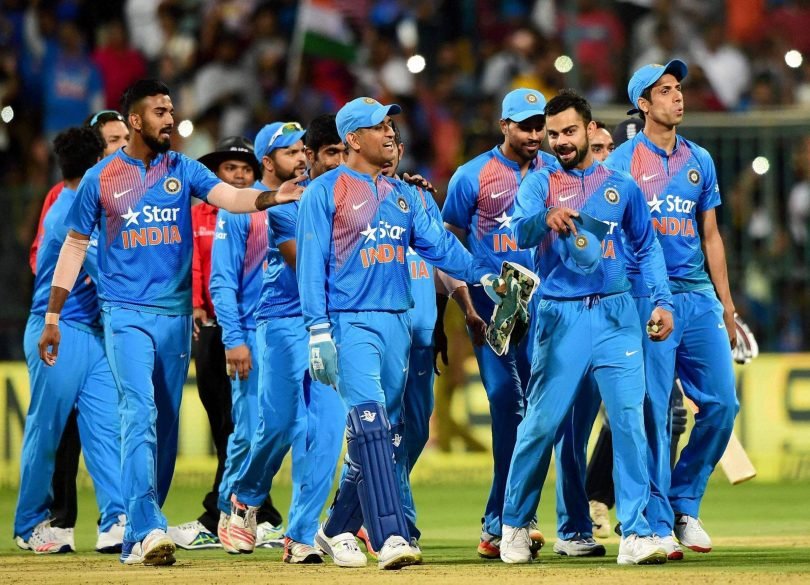Traces of T20 cricket.
The origins of the post-work T20 cricket matches between clubs truly return over 100-years, to the agricultural setting of geographical region in England.
What precisely is T20 cricket.

As the name suggests it essentially involves twenty overs per aspect. T20 cricket is essentially a brief format of cricket notable in terms of your time and overs that are concerned compared to the standard take a look at matches and one-day international matches.
Introduction of T20 cricket to this world.
A concept by former New-Zealand batsmen Martin Crowe is aware of as cricket liquid ecstasy was 1st introduced within the Nineties and within the next decade the official rules for the T20 cricket are established by England and Wales cricket board and therefore the 1st tournament was complete within the year 2003 with the aforesaid T20 rules.
Attraction towards T20 cricket
In this fast-Paced world, every individual has limited time to allocate for entertainment.
In countries like India where cricket is a religion for most individuals, T20 is like a festival of sorts with less time being involved in the match to get finished compared to the traditional test and ODI matches.
This is the vital factor why people are more and more going to stadia to enjoy the match.
The second factor being the spectacular performances by players of this generation compared to the previous generation of cricketers. T20s basically made the players play at 360° and learn each and every scoring opportunity.
The more you score the high is the chance to win in the stipulated overs. This opens up the new Avenue for the players to learn more and more different shots.
Even for the bowlers, it’s a new experience to try and contain the batsmen with the new bowling techniques. Over all it would a crazy kind of format with a breath-taking show by the players and the audience will most likely have nail-biting finishes than not.
Experts warning.
With the high rating and huge monetary benefits for the cricket boards across the world, the cricketing bodies are making this crazier by organizing the new tournaments like IPL in India, Vitality blast in England, BBL in Australia, Ram slam in South Africa, Bangladesh premier league and Lanka premier league, etc. these competitions involve players from different parts of the world who never plays for the same team in the international level, which will drive the fans crazy to watch the games.
Experts warning not to be forgotten as the test cricket is the heart of the game and T20 being the extremely smaller format of the game will have serious implications on the traditional formats. Viewership is not as good as the olden days for test cricket after the T20 cricket being introduced which is a pretty bad indication that test cricket may be forgotten in the future. Experts’ argument is that the test format of the game is the hard format and player Performance can be gazed by that.

As the smaller formats generally involve luck rather than technique the original cricketing application by the players is in serious danger. Moreover, players of the different international sides playing for the same franchise may be sharing their thoughts on the skills of the game which could be used when they compete for the national side. It could prove costly for the players and their respective countries. Expert opinion is that the balance between all formats of the game must be maintained.
Today
Thirteen sides from different parts of the country participated in Pakistan’s first competition in 2004, with Faisalabad Wolves the first winners. On 12 January 2005, Australia’s first Twenty20 game was played at the WACA Ground between the Western Warriors and the Victorian Bushrangers. It drew a sell-out crowd of 20,000, which was the first time in nearly 25 years the ground had been completely sold out, and in the Indian Premier League 2008 CSK vs KKR match played. The Attendance of the match close to 100,000 at Eden Garden stadium.
Starting 11th July 2006, 19 West Indies regional teams competed in what was named the Stanford 20/20 tournament. The event was financially backed by billionaire Allen Stanford, who gave at least US$28,000,000 funding money. It was intended that the tournament would be an annual event. Guyana won the inaugural event, defeating Trinidad and Tobago by 5 wickets, securing US$1,000,000 in prize money.
On 5th January 2007 Queensland Bulls played the New South Wales Blues at The Gabba, Brisbane. A crowd of 11,000 was expected based on pre-match ticket sales. However, an unexpected 16,000 turned up on the day to buy tickets, causing disruption and confusion for surprised Gabba staff as they were forced to throw open gates and grant many fans free entry. Attendance reached 27,653.
On 1st February 2008 Twenty20 match between Australia and India, 85,824 people attended the match at the Melbourne Cricket Ground involving the Twenty20 World Champions against the ODI World Champions.

The Stanford Super Series was held in October 2008 between Middlesex and Trinidad and Tobago., the respective winners of the English and Caribbean Twenty20 competitions, and a Stanford Superstars team formed from West Indies domestic players; Trinidad and Tobago won the competition, securing a US$280,000 prize money. On 1st November, the Stanford Superstars played England in what was expected to be the first of five fixtures in as many years with the winner claiming a US$20,000,000 in each match. The Stanford Superstars won the first match however, no further fixtures were held as Allen Stanford was charged with fraud in 2009.
Major Twenty20 Domestic Leagues:
With this rich history of Twenty20, most of the cricketing nations set their own leagues. Which Includes
- Indian Premier League (IPL)
- Big Bash League
- Bangladesh Premier League
- Nat-west T20 Blast
- Super Smash
- Pakistan Super League
- Caribbean Premier League
Article by – https://www.linkedin.com/in/srikanthreddy-gangireddy-5228951b7/






